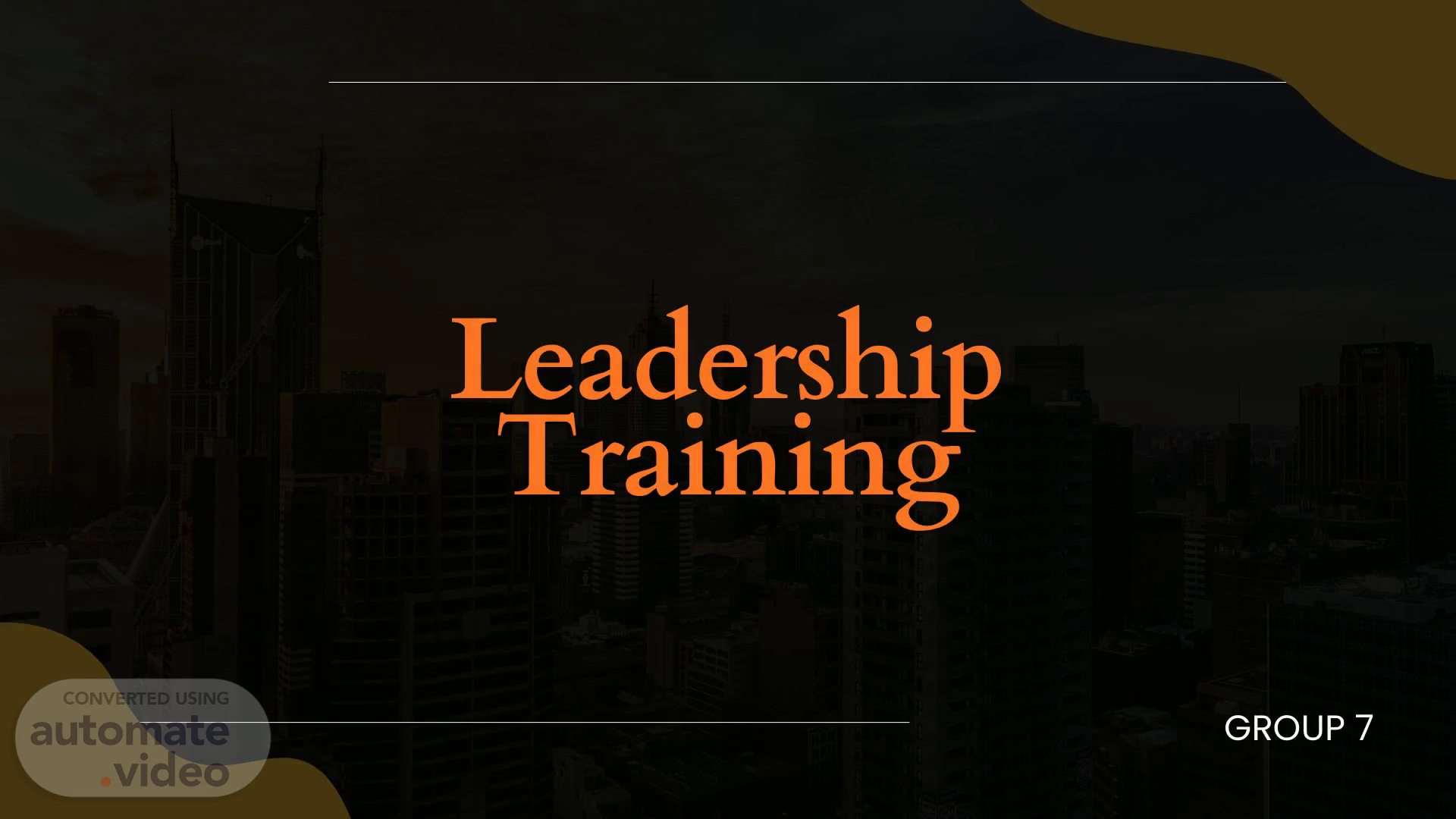
Orange and Black Photography Illustrated Business Presentation
Scene 1 (0s)
. . Leadership Training GROUP 7. Leadership Training.
Scene 2 (7s)
. . OBJECTIVES:. At the end of these lessons, you will be able to: 1) Identify your leadership skills; 2) Identify the qualities of a good leader; 3) Define leadership; and 4) Assess your style of leadership..
Scene 3 (36s)
. . . Leadership is the art of a motivating group of people to act toward achieving a common goal. This means directing your subordinates or followers with a strategy to meet their goals. Leaders act to help a group attain objectives through the maximum application of its capabilities. They do not stand behind a group to push and prod but rather they place themselves before the group as they facilitate progress and inspire groups to accomplish organizational goals..
Scene 4 (0s)
. . NATURE OF LEADERSHIP. Leadership derives from the power and is similar to, yet different from management. A manager should be a leader but a leader may not be a manager. There can be leaders of completely unorganized groups while there can be managers only of organized groups. Leadership is essential for managing. The ability to lead effectively is one of the keys to being effective as he can combine resources and lead a group to achieve their goals. The essence of leadership is followership. It is the willingness of people to follow the leader. Moreover, people tend to follow leaders whom they see providing means of achieving their desires, needs, and wants. Leaders must co-exist with the subordinates or followers. They must have a clear idea of their ambitions and demands. This creates loyalty and trust in subordinates for their leader..
Scene 5 (1m 35s)
. . LEADERSHIP AND THE USE OF POWER. Power is the ability to influence the behavior of others to bring about desired outcomes. You are considered to have power if you can change the behavior and attitudes of other individuals..
Scene 6 (2m 4s)
. . 2. Referent Power – also called as charismatic power. It comes from the personal qualities of a leader. Leaders with this type of power hold and attract people through the strength of their personality..
Scene 7 (2m 43s)
. . 4.Creativity .Thinking of effective ways of doing things that don't require a lot of time, effort or money..
Scene 8 (3m 27s)
. . 10.Planning Ahead .A good leader plans and knows what is up ahead. He has good judgment in predicting what may happen in the future and can make work decisions based on that..
Scene 9 (3m 51s)
. . . . Difference between a Boss and a Leader. Drives subordinates Depends on authority.
Scene 10 (4m 11s)
. . GUIDELINES TO ACHIEVE LEADERSHIP. 1.Practice discipline. A good leader needs to develop discipline in both professional and personal life. People will judge your capacity to lead by the amount of discipline you display..
Scene 11 (4m 50s)
. . 4.Be mentally alert. You must always be ready for any decision. Know how to decide well and make decisions promptly..
Scene 12 (5m 38s)
. . ELEVEN PRINCIPLES OF LEADERHIP. 1. Take responsibility of your action regardless of the outcome. 2. Set the example. 3. Know yourself and make improvement. 4. Seek responsibility and develop a sense of responsibility. 5. Ensure that the task is understood. 6. Know your men and look out for their welfare. 7. Keep your men always informed. 8. Train your men as a team. 9. Employ your command on the right time and place. 10. Know your job thoroughly. 11. Make sound and timely decisions..
Scene 13 (6m 5s)
. . . LEADERSHIP STYLE. Leadership style refers to the consistent manner a leader behaves in the approaching situation towards influencing the behaviour of the leader..
Scene 14 (6m 22s)
. . . 2. Participative leaders – also called democratic leaders. Share power and authority with the members of the group. Decisions are not unilateral because they arise from consultation with followers and participation by them. Because communication is two way, employees are informed about conditions affecting their jobs and encourage to express their ideas and make suggestions..
Scene 15 (6m 39s)
. . . 3. Laizze’s faire or Free-rein leaders – avoid power and responsibilities. They depend largely upon the group members train themselves and provide their own motivation. The leaders play only minor roles..
Scene 16 (6m 52s)
. . SELF-AWARENESS AND VALUE. . . . . SELF-AWARENESS SELF-AWARENESS.